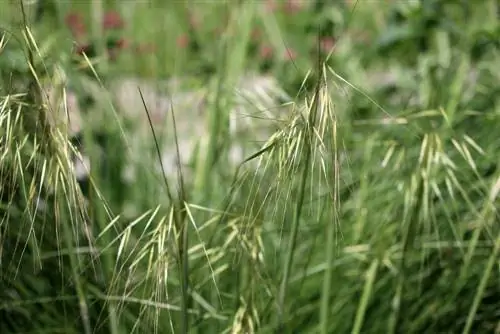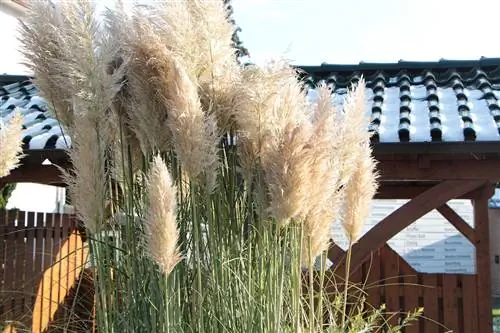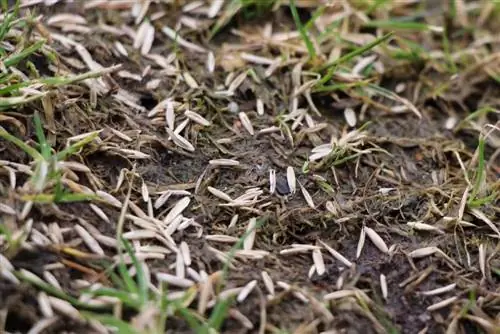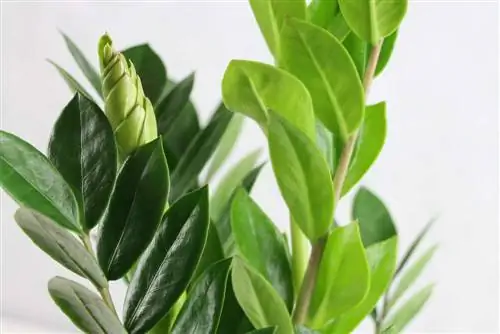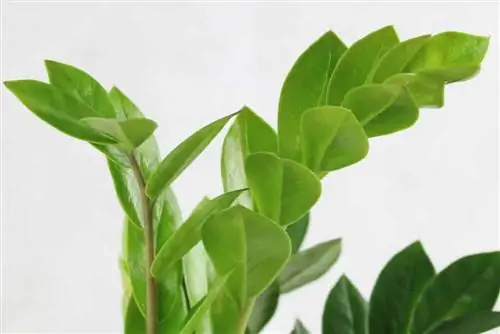- Author admin [email protected].
- Public 2023-12-17 03:39.
- Last modified 2025-01-24 12:45.
As soon as you look at the feather grass you realize why it is also called angel hair. The Latin name for the feather grass is Stipa tenuissima. The blades of grass look like individual angel hairs. Fine and silky, the stalks rise towards the sky and create a special flair. Whether in the home garden or on a natural meadow, the angel hair offers a variety of colors. Even in winter, the Stipa tenuissima can bring color into dreary days with its bright green.
Angel hair is a grass that is also hardy. Feather grass also belongs to the sweet grass family, which grows perennial. The growth behavior is loose and upright to slightly curved. The height of growth varies greatly. There are blades of grass that reach a height of 2 meters. Angel hair is not only a popular plant among hobby gardeners. The Stipa tenuissima plant is also often used in floristry for dried flower bouquets. The place of origin is Mexico, from where it was scattered all over the world. The main growing area today is in China.
Sowing and propagation
The seeds from the Stipa tenuissima plant can be purchased at any nursery. Another option is to remove the seeds from the panicles and use them for sowing. If you already have the Stipa tenuissima in the garden, it will also self-sow. The immense tension of the panicles ensures that the seeds are thrown several meters away from the mother plant. Sowing is very easy. Between February and June you should scatter the seeds directly on the ground. You can also grow the angel hair in seed trays and later plant it in the ground. A thin layer of soil is placed on the seeds and is also pressed lightly. The sowing should be kept well moist. However, avoid waterlogging. The seeds germinate at a temperature of 10 to 20 °C. The duration can be variable and can last up to 8 weeks. The spiral-shaped awns also tend to get caught in animal hair or stick to people's clothing, ensuring automatic reproduction.
Planting & Repotting
Once the Stipa tenuissima has reached a height of 5 cm, it is recommended to put a few young plants together to create a bundle of the Stipa tenuissima plant.
The seedlings are planted from the seed tray into the open ground at a height of 5 cm. Furthermore, repotting is no longer necessary. If you want to keep the Stipa tenuissima in a pot, you should repot the grass annually as it has a well-developed root system. For this, always use a larger pot than the previous one.
Care
So that the angel hair can grow well, you should choose a well-drained soil. To do this, you can fill the ground with gravel. As soon as winter wetness occurs, it can damage the Stipa tenuissima plant to the extent that it dies. Waterlogging must therefore be avoided at all costs. In addition, fertilizing the Stipa tenuissimaes plant is unnecessary. However, if you notice that the feather grass has stopped growing, you can provide some nutrients with a natural fertilizer such as coffee grounds or nettle manure. As a rule, the German rain is enough so that the plant does not need to be watered. The Stipa tenuissima also survives a slight dry period.
Location
The soil should be well-drained. Waterlogging must be avoided at all costs. In addition, the soil should not be too nutrient-rich. If the feather grass is given a warm and bright place - perhaps a little sunny - the plant will grow well. Heather gardens are also a good place where angel hair feels very comfortable. The Stipa tenuissima plant also looks great in rock gardens.
Watering & Fertilizing
Watering is not absolutely necessary. However, if the soil is dry for several weeks, you should give it a little water every now and then.
The easy-care Stipa tenuissima gets along easily with little food and water. This makes fertilizing unnecessary. Only when you discover that the Stipa tenuissima has stopped growing can you give some coffee grounds or nettle manure as food.
Cutting & Overwintering
As easy as angel hair is to care for, it doesn't mind being cut in the fall. Therefore, avoid cutting the Stipa tenuissima plant in autumn and prefer to cut it in spring. In March or April you can cut the angel hair just above the ground to create space for new shoots.
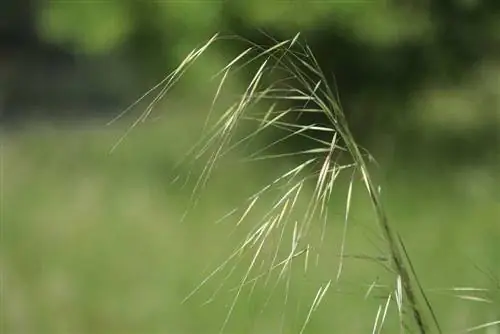
For overwintering, it is recommended that you tie the Stipa tenuissima tufts together and protect them against frost with leaves. To do this, cover the Stipa tenuissima tufts well. Be sure to avoid cutting your angel hair back in the fall. Spring is an optimal time to cut the grass close to the ground.
Diseases and pests
The Stipa tenuissima plant is almost immune to pests due to its nature. As a rule, the plants are not attacked by any pests. Diseases are also a foreign concept for the Stipa tenuissima plants. The only thing that can harm angel hair is waterlogging.
The feather grass or 'Stipa' is a magical ornamental grass that comes in many variations such as:
- the fluffy feather grass or feather awl grass or maidenhair grass
- and the silver ear grass
- as well as the heron feather grass.
All varieties are clumpy, perennial sweet grasses. These have been cultivated as ornamental grasses in gardens since the beginning of the 20th century.
The feather grass is a very easy-care plant
For he althy growth it is absolutely necessary:
- an extremely dry planting location; However, it is otherwise a very easy-care plant
- The delicate feather grass always impresses with its fluffy, high tufts, which can reach 30 to 80 centimeters (some varieties even 200 centimeters) in height
- it forms clumps from which the inflorescences sprout during the summer
- The flowering period extends from July to August and during this time the feather grass can be combined outdoors with wild asters and perennial flax
- especially dryness and a lot of sunlight are very important for the feather grass, although watering should only be done after long periods of extreme heat
- The feather grass does not need fertilizer at all, as in its natural environment it always grows on extremely poor soil.
The optimal care of feather grass
To propagate feather grass, the seed is divided and the seeds are sown during cold autumn days. In the spring, the feather grass plant can be divided for propagation. If you want to protect it during the winter weeks, you can use spruce or fir branches. When spring begins, the feather grass is ideally cut off to hand height (about 10 centimeters above the ground) to allow it to show itself in all its glory again. An ideal time for this cut is the months of February and March. Feather grass is also an ideal cut plant and is therefore ideal for dry bouquets/arrangements and floor vases.
The perfect location for feather grass is extremely dry soil
- this can itself be a little stony and calcareous, it just needs to have excellent permeability so that rainwater can drain away quickly and not cause any waterlogging
- Furthermore, covered areas such as a roof overhang with a gravel garden are particularly suitable for planting small groups of feather grass
- In addition, feather grass requires sufficient space to grow, as it absolutely does not like being crowded by other plants
- The planting distance between each other should be approximately 20 to 30 centimeters, which means around 10 feather grass plants per square meter
- To achieve an excellent look, the 'Stipa' (feather grass) should be planted in front of a hedge/wood or a shrub with a dark color.
A proven protection for the feather grass during the winter weeks
Some variants of 'Stipa' do not require any special protection in winter because they are hardy. However, most varieties cannot survive without winter protection for their long stalks and roots. For example, this can help:
- covering the ground area of the feather grass with a high layer of leaves or spruce and fir branches
- since the long stalks are sensitive to moisture, they are tied together loosely
- A cut must not be made in autumn, otherwise water/moisture will easily penetrate the open stalks and cause the plant to freeze.

